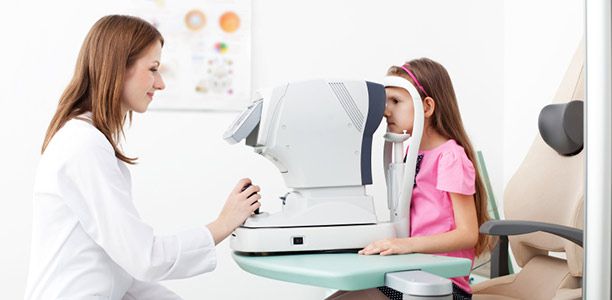Little is known about the long-term health of survivors of childhood cancers that affect vision, but two new studies provide valuable insights that could impact patient care and follow-up. The findings are published early online in CANCER, a peer-reviewed journal of the American Cancer Society.
Retinoblastoma is the most common eye tumor of young children and may affect either one or both eyes. Survival rates are excellent in the United States, and patients are expected to live for many years after finishing cancer therapy. Previous reports on treatment-related complications in survivors of retinoblastoma have been limited by small numbers of participants or have focused exclusively on specific problems, such as eye/vision problems or new cancers. To provide a more comprehensive report, a team led by Danielle Novetsky Friedman, MD, of Memorial Sloan Kettering Cancer Center in New York City, assessed the long-term medical problems of 470 adult retinoblastoma survivors from the Childhood Cancer Survivor Study who were diagnosed between 1932 and 1994 and were followed for an average of 42 years. Survivors were compared with 2377 unaffected individuals of similar age, sex, and race.
The investigators found that adult retinoblastoma survivors were at increased risk of developing various medical problems, including second cancers, when compared with unaffected individuals. This increased risk was largely driven by those with retinoblastoma in both eyes, a group that is known to harbour a genetic risk for developing new cancers. In fact, when the researchers excluded vision problems and new cancers, those with a history of disease in one eye had no increased risk of chronic medical problems when compared with unaffected individuals of similar age, sex, and race. Importantly, the vast majority of retinoblastoma survivors rated their general health as “excellent to good,” indicating that this population continues to maintain comparatively normal health many years after completing therapy.
“Novel data presented in this report will guide practice for oncologists, ophthalmologists, survivorship practitioners, and primary care providers involved in the long-term care of survivors of retinoblastoma by helping them identify those at highest risk for medical problems,” said Dr. Novetsky Friedman. “Appropriate lifelong risk-based screening of this population will allow for timely treatment of any medical problems that may arise.”
In an accompanying article, Peter de Blank, MD, MSCE, of Case Western Reserve University School of Medicine and UH Rainbow Babies & Children’s Hospital in Cleveland, and his colleagues report on the results from the Childhood Cancer Survivor Study investigating the long-term effects of blindness in children with brain tumors. The study included 1233 survivors of childhood brain tumors, 22.5% of whom had visual impairment. Vision loss in childhood did not affect psychological outcomes when patients reached adulthood, but blindness in both eyes was associated with an increased risk of being unmarried, living with a caregiver, and being unemployed. More limited vision loss—such as in a single eye—was not clearly associated with negative outcomes.
Dr. de Blank noted that in about one-third of cases, current chemotherapy treatments improve vision in children with brain tumors involving visual pathways. Another third will have their vision stabilized, and another third will have their vision deteriorate despite intense treatment. “We hope that this study will help inform therapeutic decision-making as patients consider the risks and benefits of therapy,” he said. “And for the third of patients whose vision will continue to deteriorate, we hope that this study provides some evidence that for many survivors the long-term effects of vision impairment do not have to impact their long-term psychological or socio-economic outcomes.”
(Source: Wiley, CANCER)










